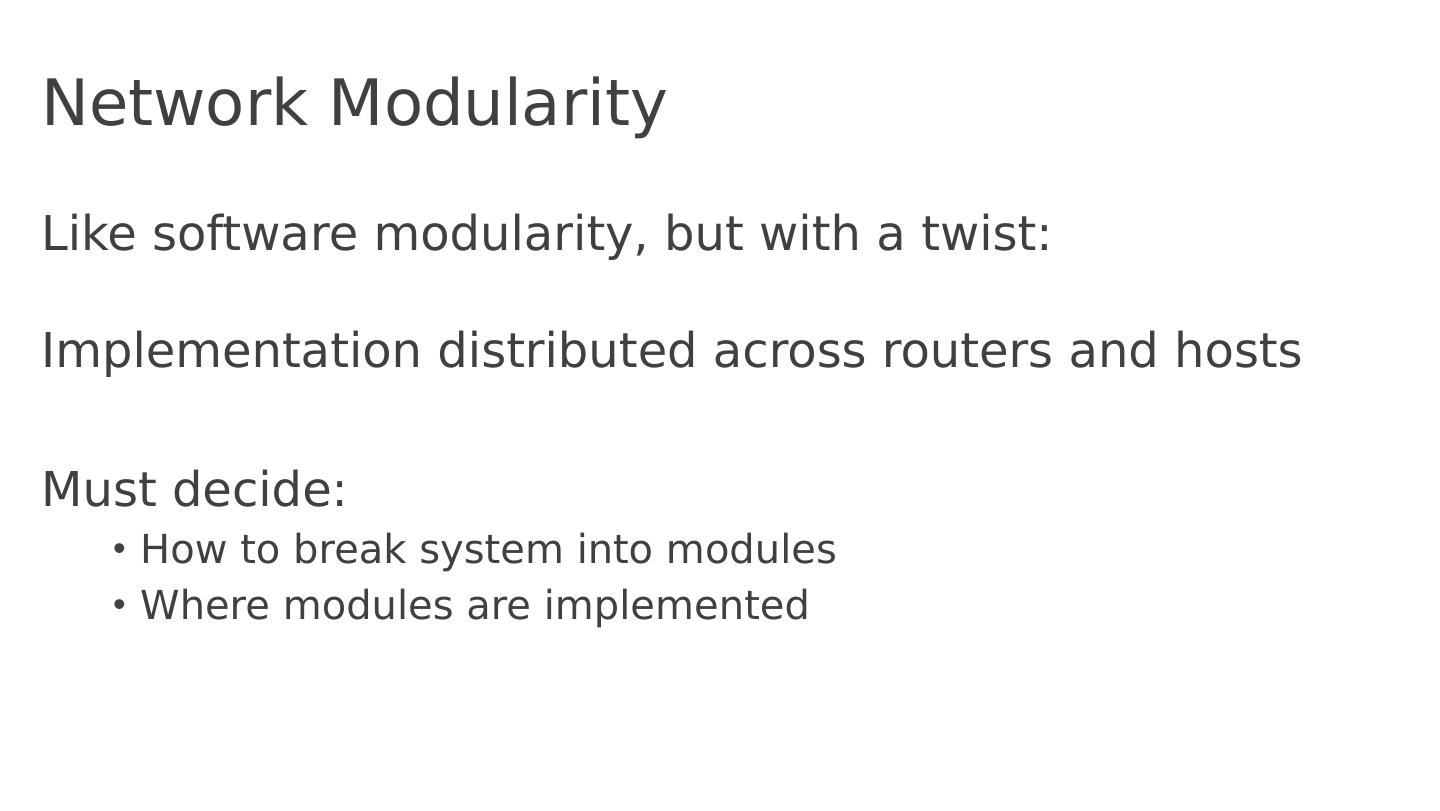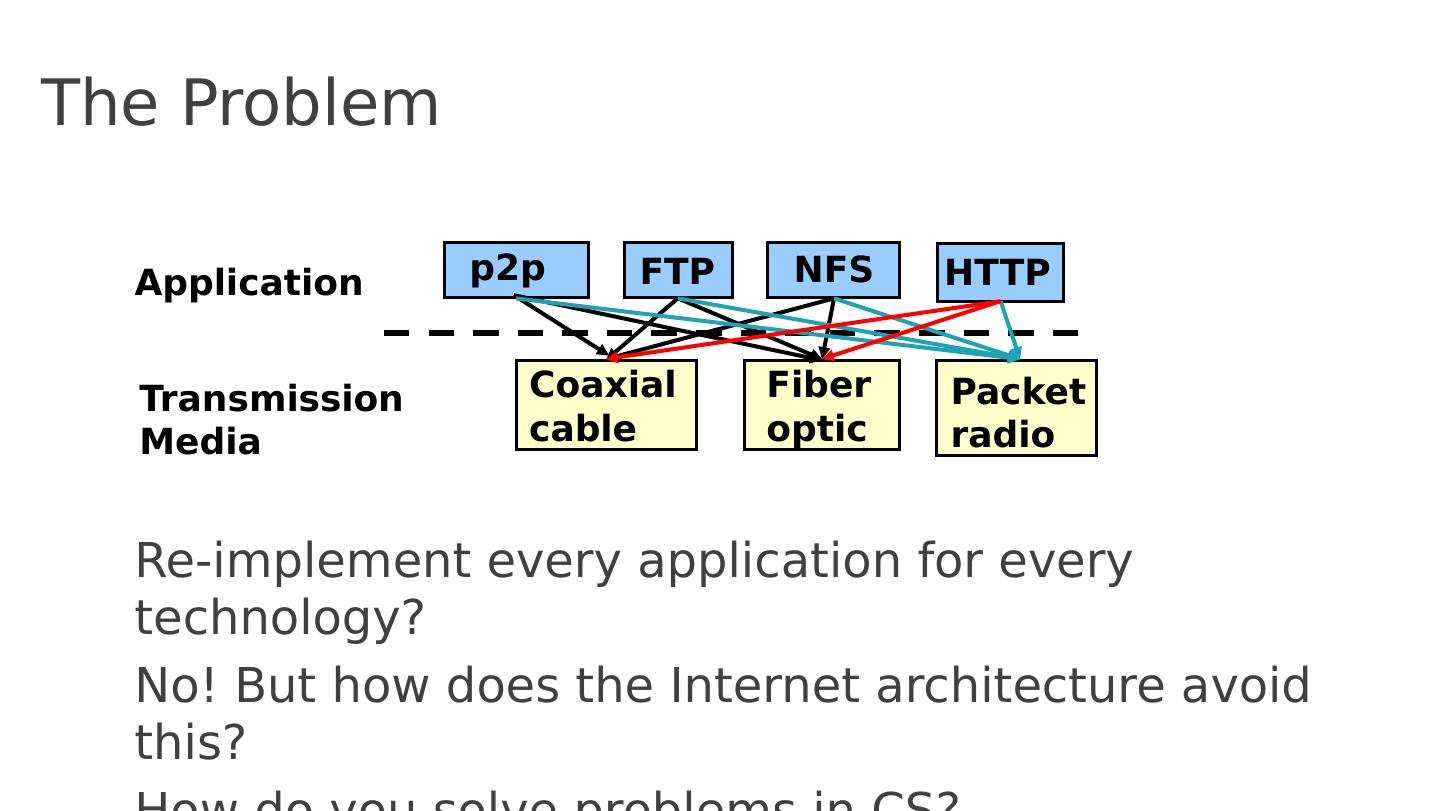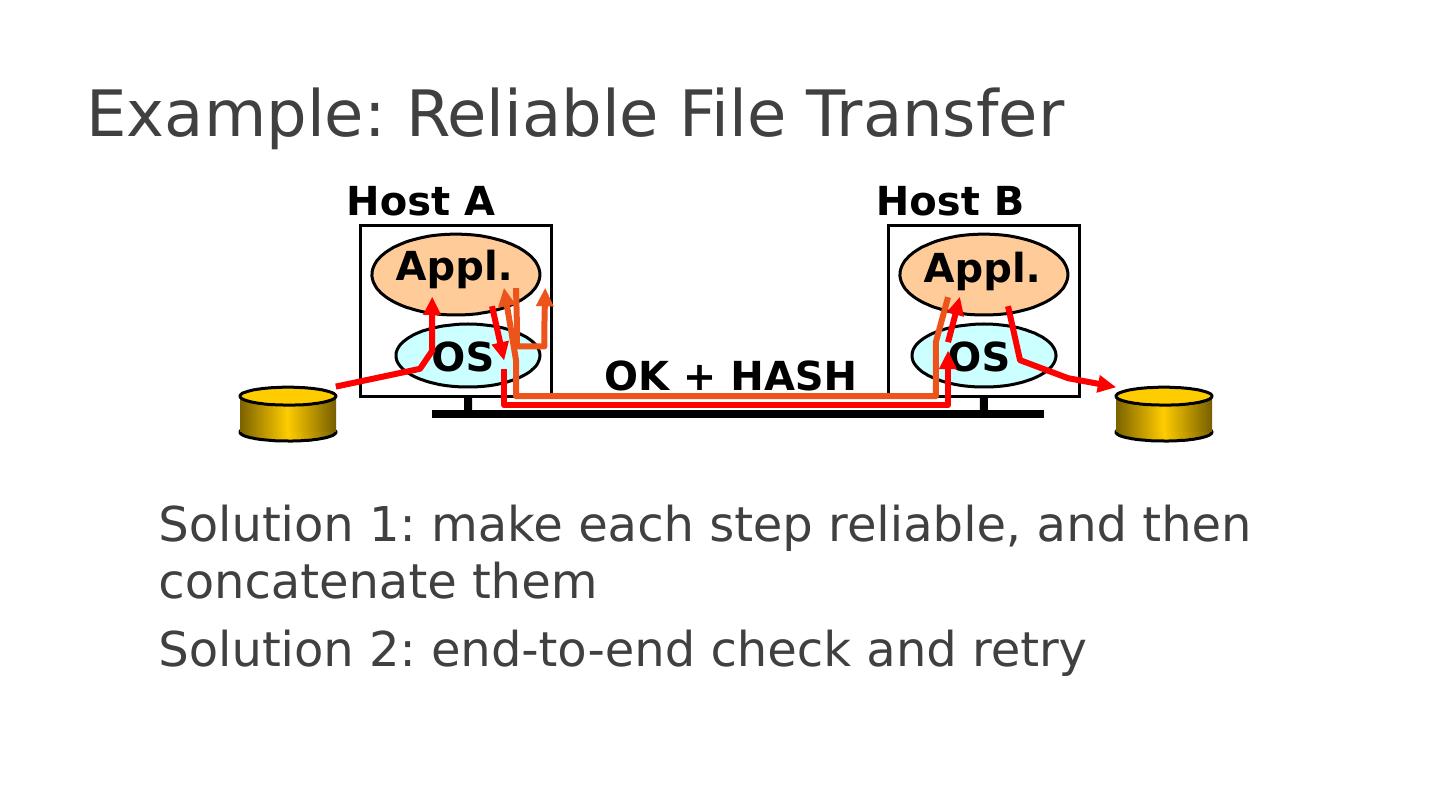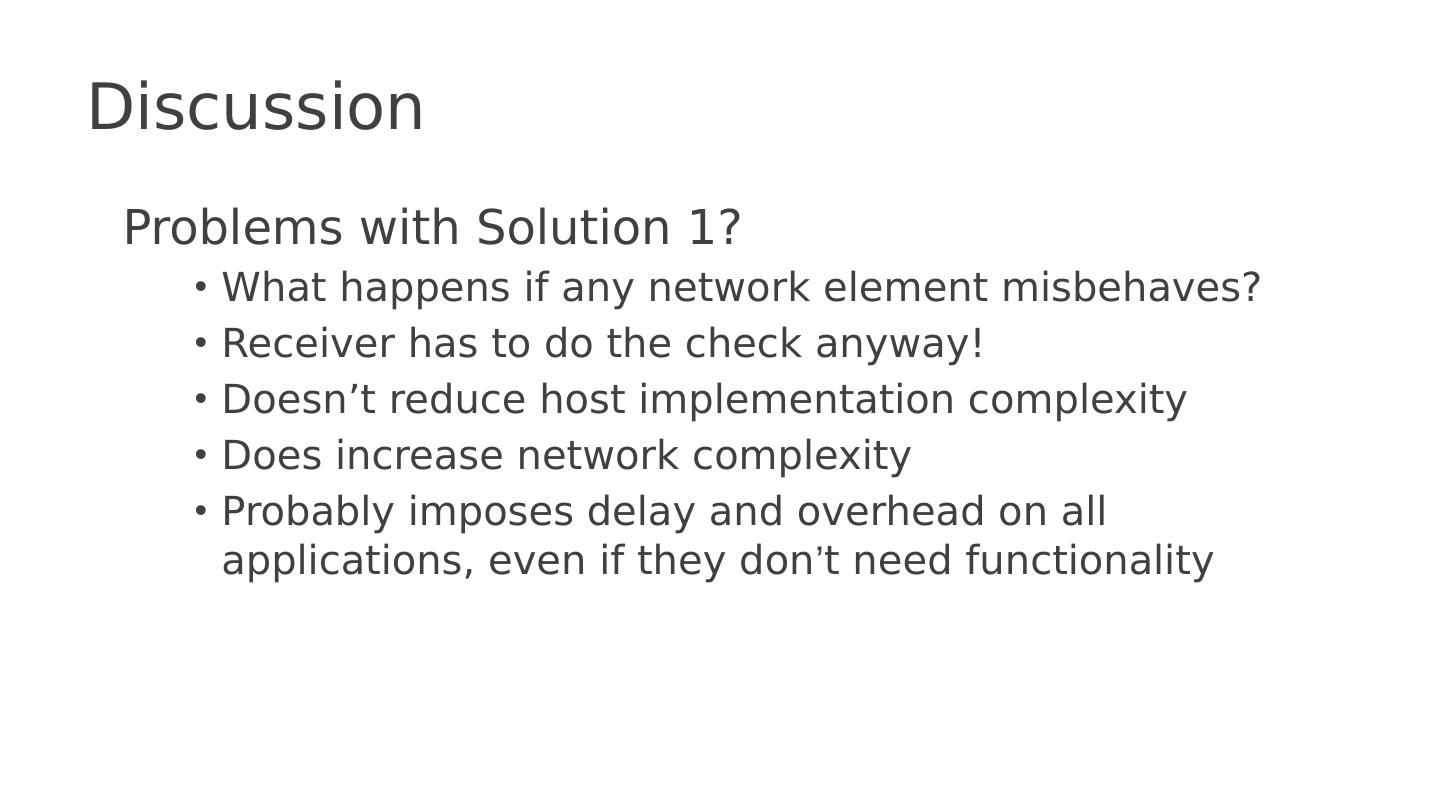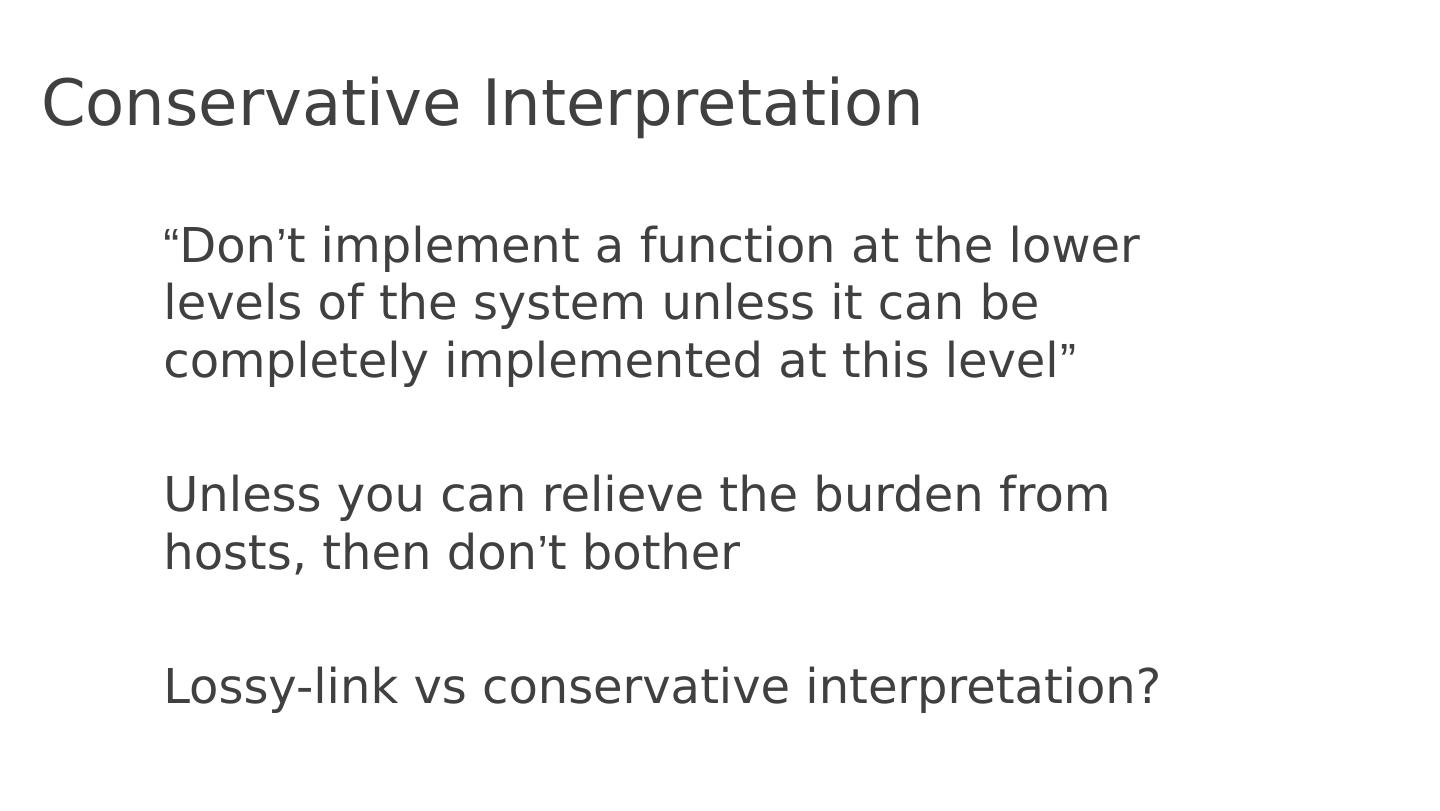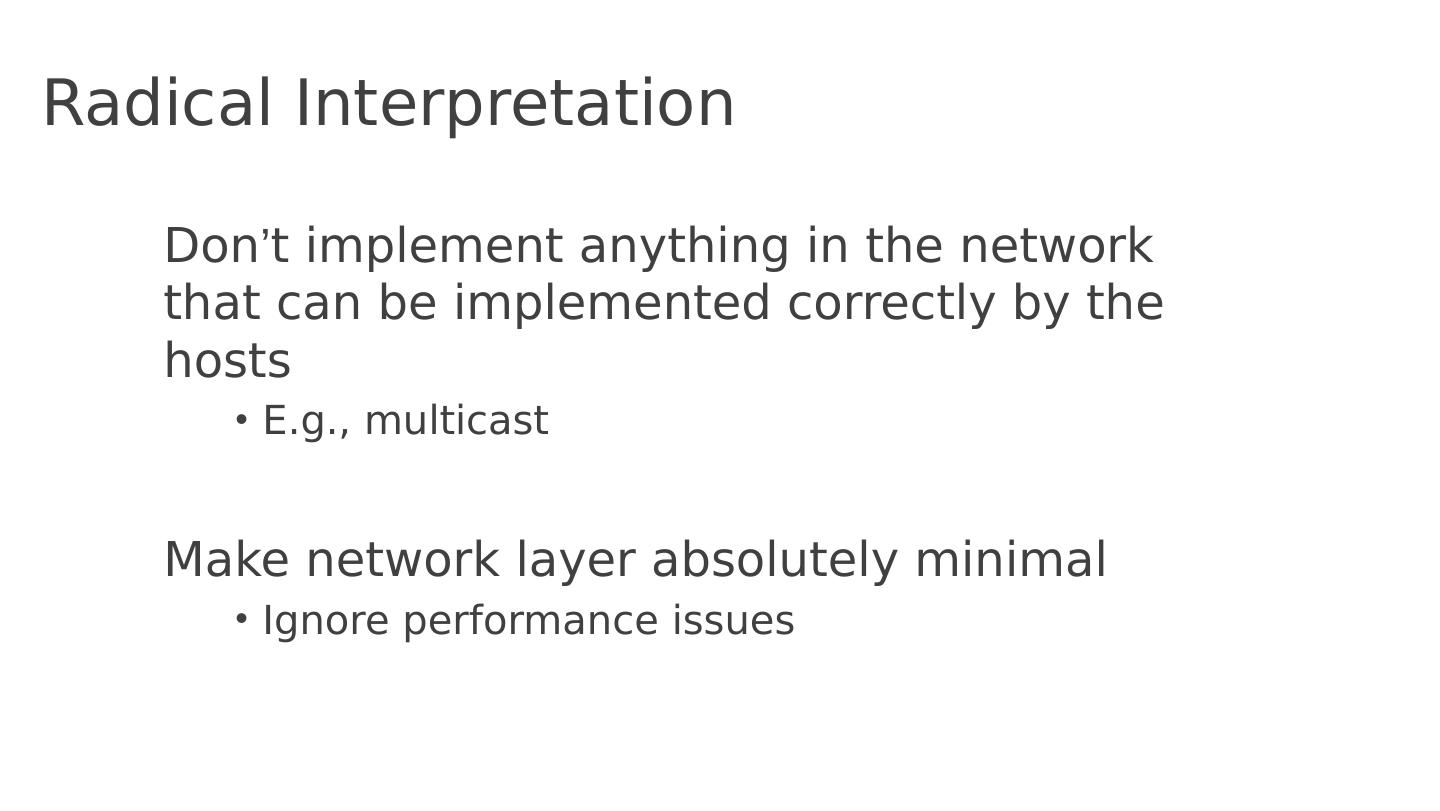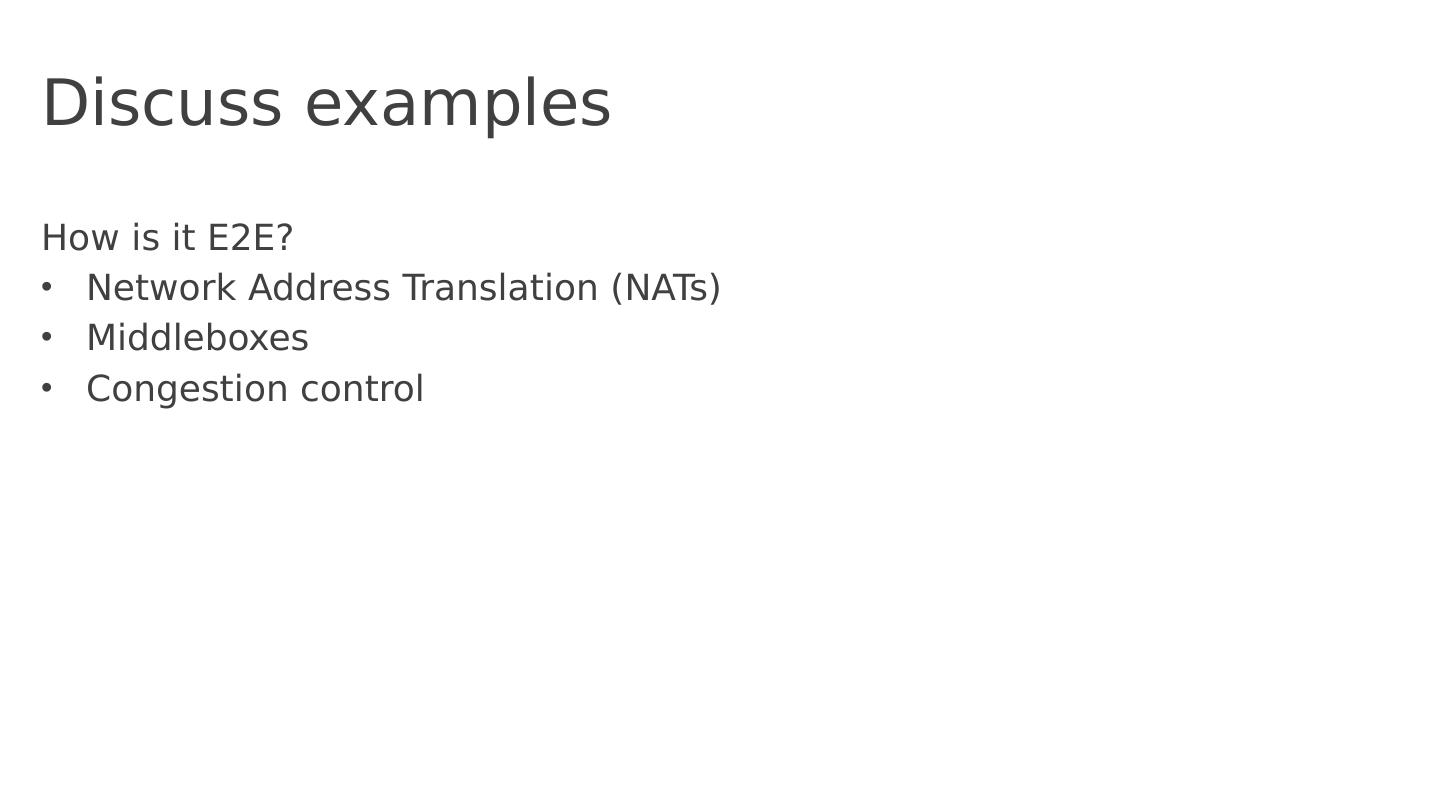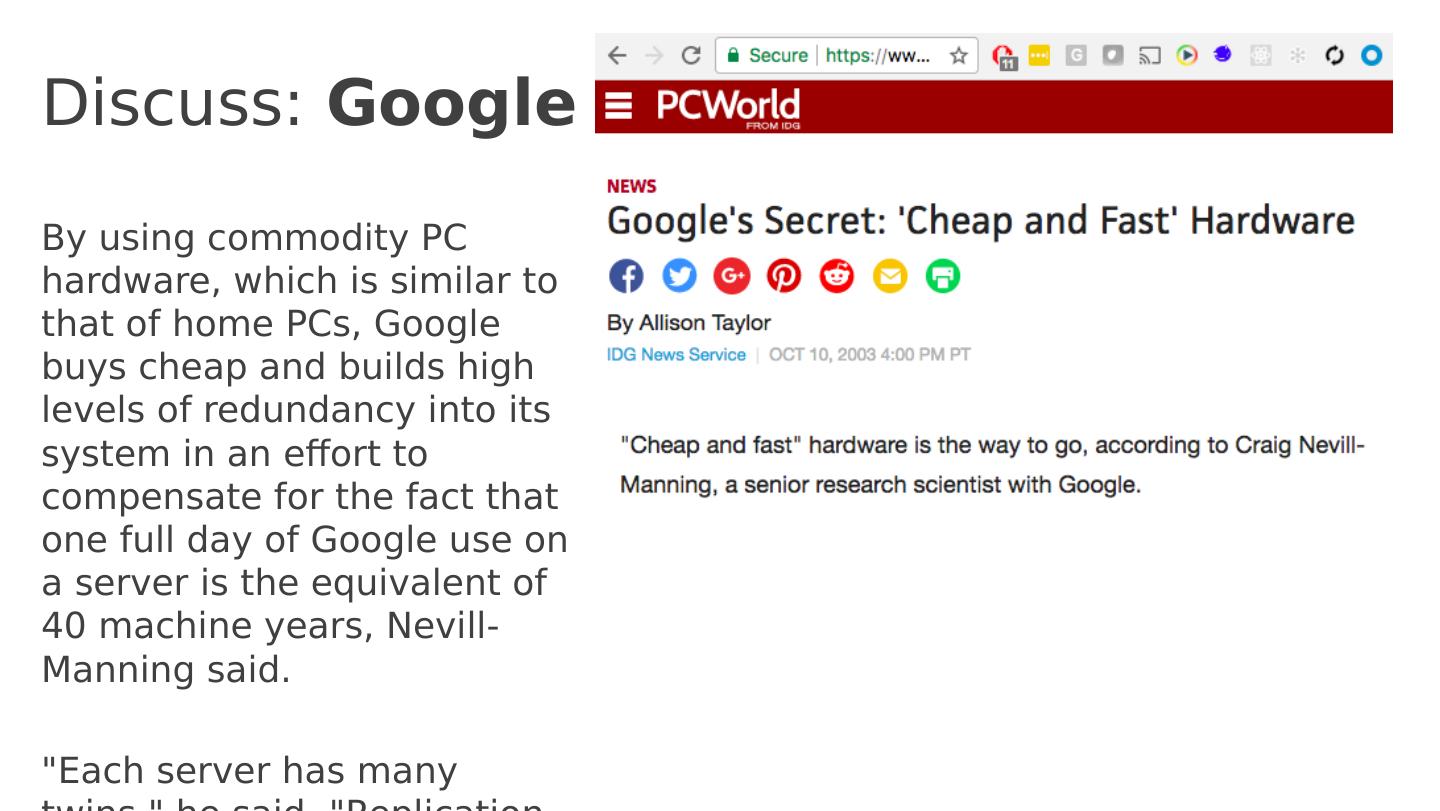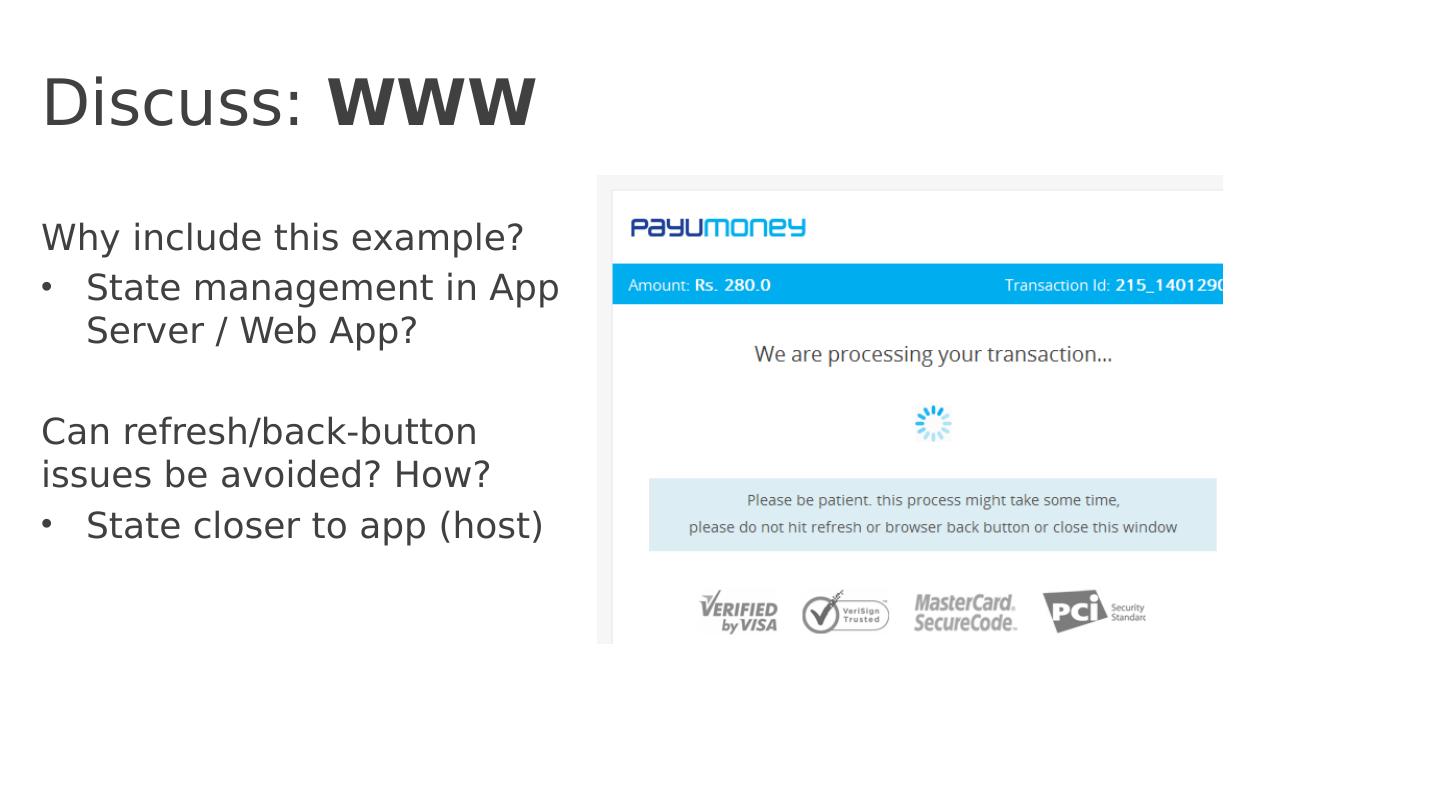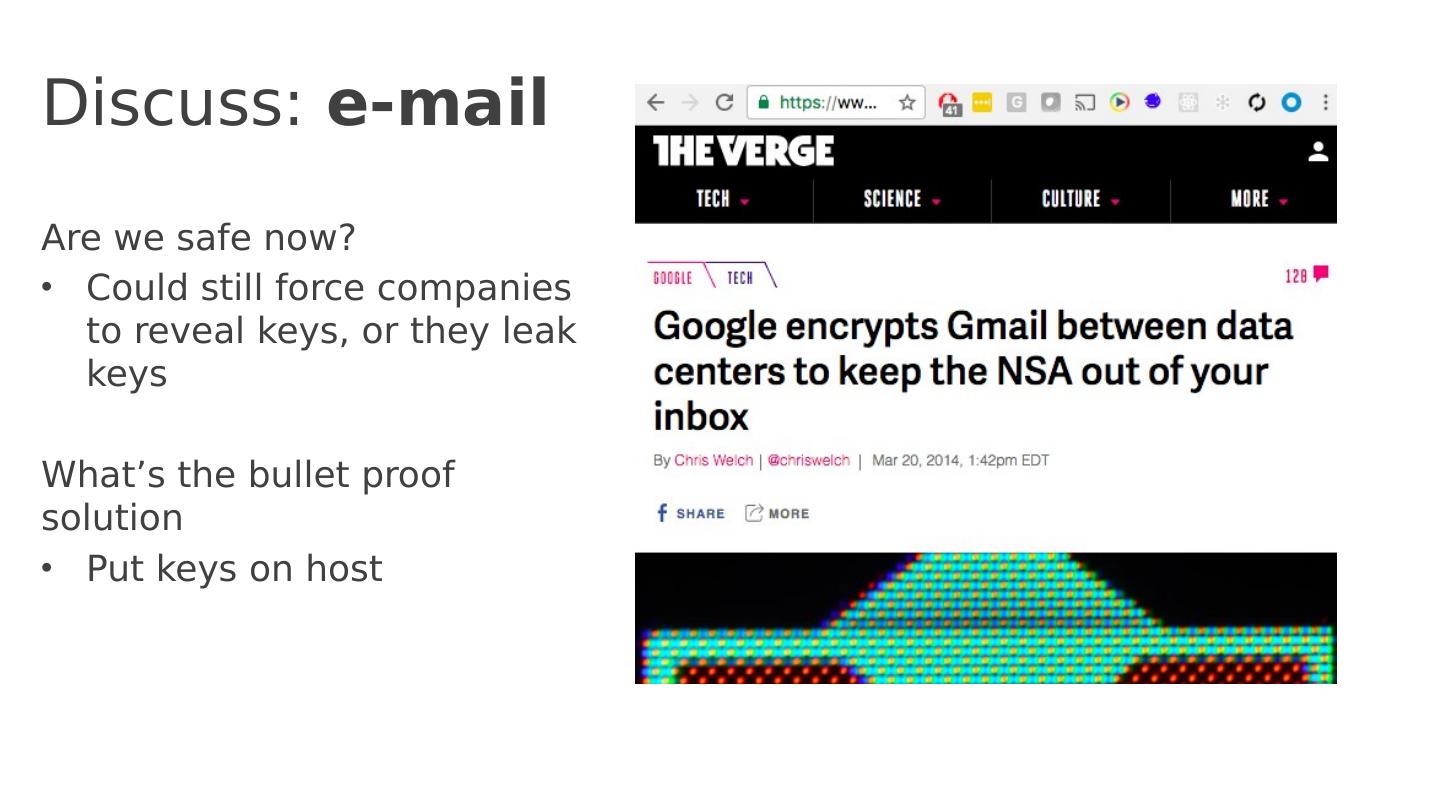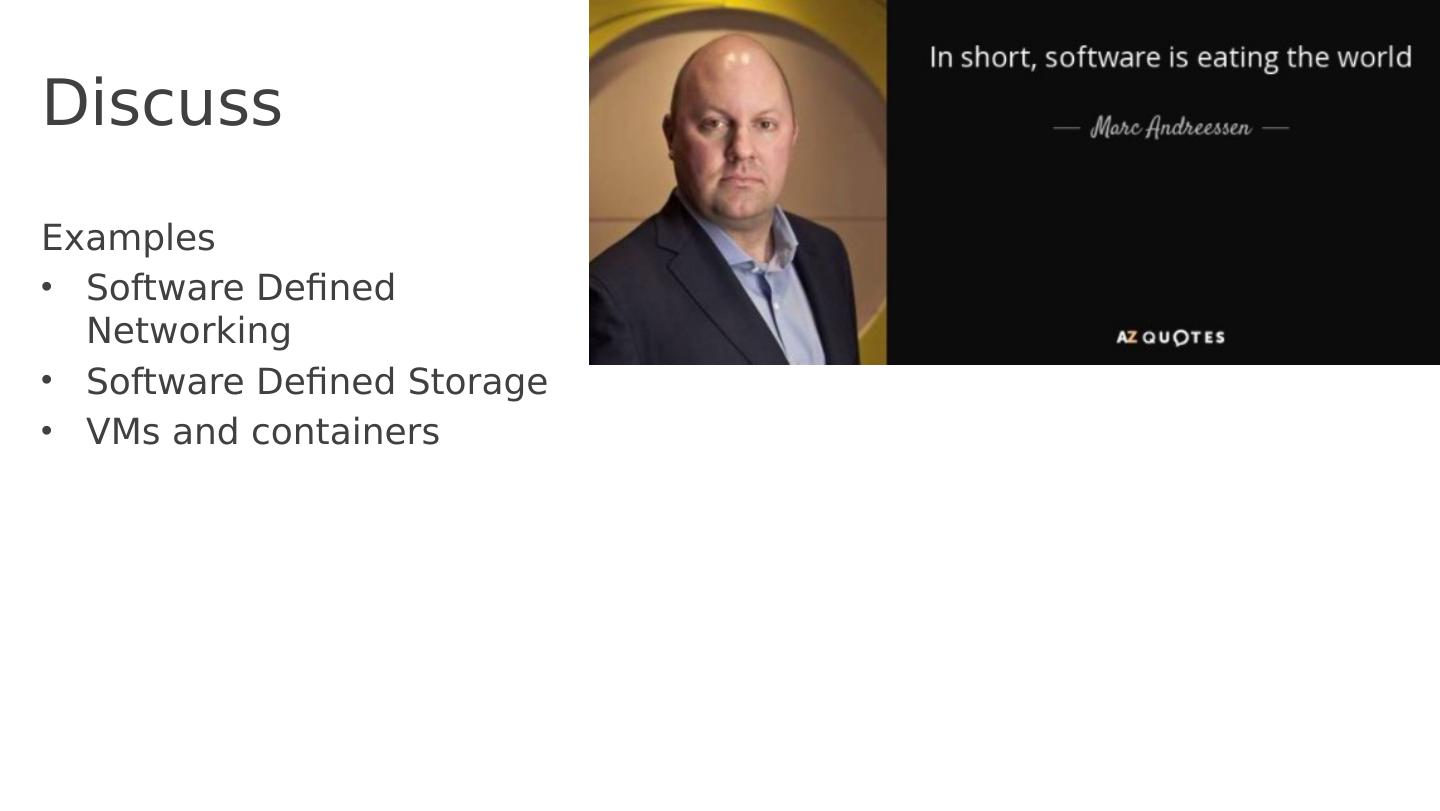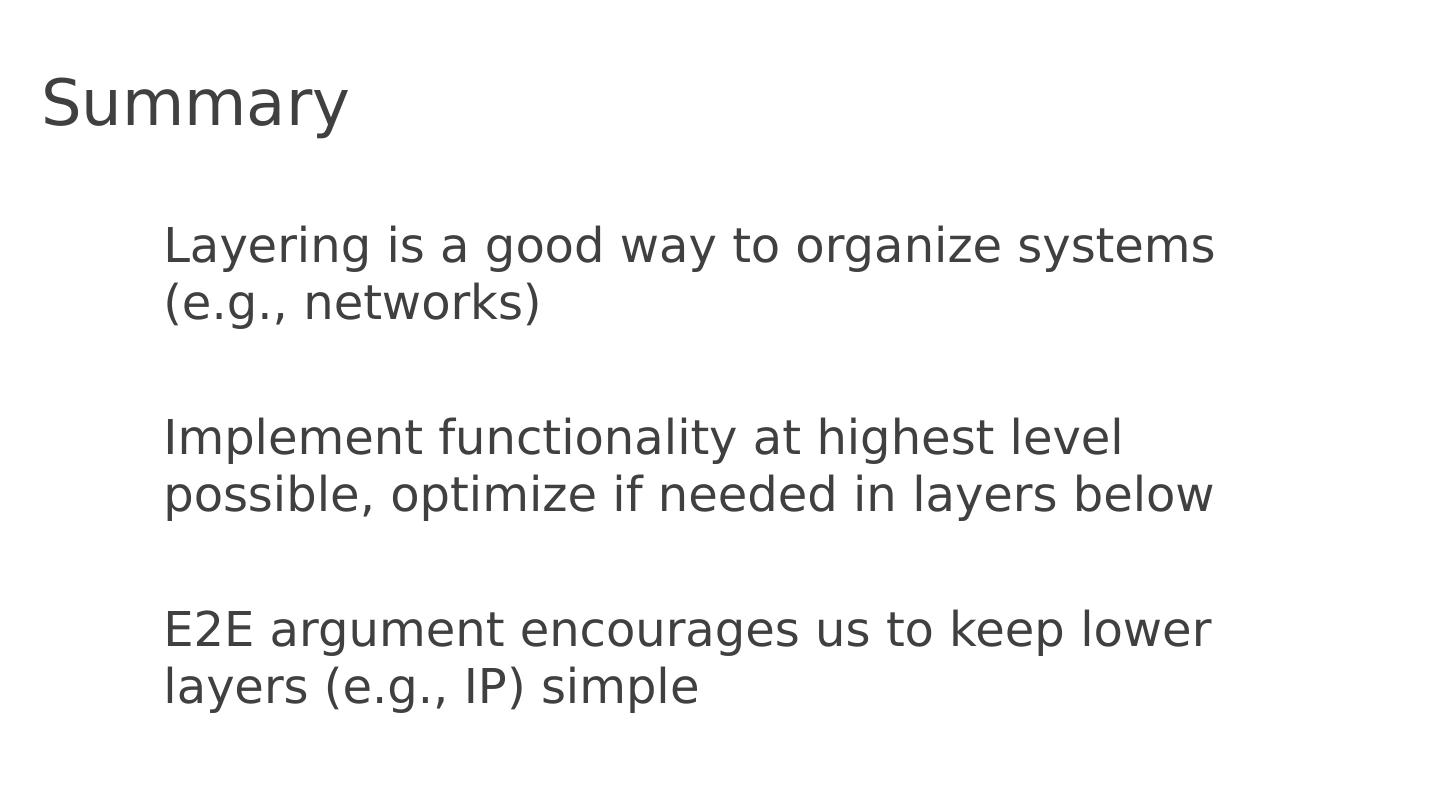- 快召唤伙伴们来围观吧
- 微博 QQ QQ空间 贴吧
- 文档嵌入链接
- <iframe src="https://www.slidestalk.com/u231/E2E_Arguments?embed" frame border="0" width="640" height="360" scrolling="no" allowfullscreen="true">复制
- 微信扫一扫分享
E2E Arguments
展开查看详情
1 .E2E Arguments & Project Suggestions (Lecture 4, cs262a) Ali Ghodsi and Ion Stoica, UC Berkeley Jan 29, 2018
2 .Software Modularity Break system into modules Well defined interface, implementation behind interface Separation of concerns, encapsulation, information hiding, … Main advantages? Hides complexity from user, division of labor, scaling teams Implementation can change, interface stays the same, apps don’t need to change SQL! Functional programming, ADT, functions, modules, OS, … Main way humans build complex systems (e.g. computer, car, buildings) Can be more efficient. Why?
3 .Software Modularity Disadvantages? Can hurt performance DLL-hell, can it apply to networking? Can it increase complexity?
4 .Network Modularity Like software modularity, but with a twist: Implementation distributed across routers and hosts Must decide: How to break system into modules Where modules are implemented
5 .Layering Layering is a particular form of modularization System is broken into a vertical hierarchy of logically distinct entities (layers) Service provided by one layer is based solely on the service provided by the layer(s) below Rigid structure: easy reuse, performance can suffer
6 .The Problem Re-implement every application for every technology? No! But how does the Internet architecture avoid this ? How do you solve problems in CS? p2p FTP NFS Packet radio Coaxial cable Fiber optic Application Transmission Media HTTP
7 .Solution: Intermediate Layer Introduce an intermediate layer that provides a single abstraction for various network technologies A new app/media implemented only once p2p SSH NFS Packet radio Coaxial cable Fiber optic Application Transmission Media HTTP Intermediate layer
8 .Placing Functionality Most influential paper about placing functionality is “ End-to-End Arguments in System Design ” by Saltzer , Reed, and Clark “ Sacred Text ” of the Internet Endless disputes about what it means Everyone cites it as supporting their position http://www.martingeddes.com/think-tank/the-future-of-the-internet-the-end-to-end-argument /
9 .Basic Observation Some applications have end-to-end performance requirements Reliability, security, etc Implementing these in the network is very hard: Every step along the way must be fail- proof Hosts: Can satisfy the requirement without the network Can ’ t depend on the network
10 .Example: Reliable File Transfer Solution 1: make each step reliable, and then concatenate them Solution 2: end-to-end check and retry OS Appl. OS Appl. Host A Host B OK + HASH
11 .Discussion Problems with Solution 1? What happens if any network element misbehaves? Receiver has to do the check anyway ! Doesn’t reduce host implementation complexity Does increase network complexity Probably imposes delay and overhead on all applications, even if they don ’ t need functionality
12 .Discussion Advantages of Solution 2? Full functionality can be entirely implemented at application layer with no need for reliability from lower layers Simpler solution Fewer dependencies, fewer parts C hanges in software easier than changes in hardware When would you still want reliability on a link-level? Really lossy link big performance improvement
13 .Conservative Interpretation “ Don ’ t implement a function at the lower levels of the system unless it can be completely implemented at this level ” Unless you can relieve the burden from hosts, then don ’ t bother Lossy -link vs conservative interpretation?
14 .Radical Interpretation Don ’ t implement anything in the network that can be implemented correctly by the hosts E.g., multicast Make network layer absolutely minimal Ignore performance issues
15 .Moderate Interpretation Think twice before implementing functionality in the network If hosts can implement functionality correctly, implement it a lower layer only as a performance enhancement But do so only if it does not impose burden on applications that do not require that functionality
16 .Discuss examples How is it E2E? Network Address Translation (NATs) Middleboxes Congestion control
17 .Discuss: Google By using commodity PC hardware, which is similar to that of home PCs, Google buys cheap and builds high levels of redundancy into its system in an effort to compensate for the fact that one full day of Google use on a server is the equivalent of 40 machine years, Nevill -Manning said. "Each server has many twins," he said. "Replication is needed for scalability .”
18 .Discuss: WWW Why include this example? State management in App Server / Web App? Can refresh/back-button issues be avoided? How? State closer to app (host)
19 .Discuss: e-mail Are we safe now? Could still force companies to reveal keys, or they leak keys What’s the bullet proof solution Put keys on host
20 .Discuss Examples Software Defined Networking Software Defined Storage VMs and containers
21 .Summary Layering is a good way to organize systems (e.g., networks) Implement functionality at highest level possible, optimize if needed in layers below E2E argument encourages us to keep lower layers (e.g., IP) simple
22 .Projects Suggestions (see https:// tinyurl.com/y8rfenr5 )
23 .Project Dates Wednesday, 1 /31 : add more projects to google sheet Add your own project if you are looking for a partner Wednesday, 2/7 : pick a partner and send your project proposal We will send out a google form to fill in for your project proposals Monday, 3/12 : project progress review More details to follow






